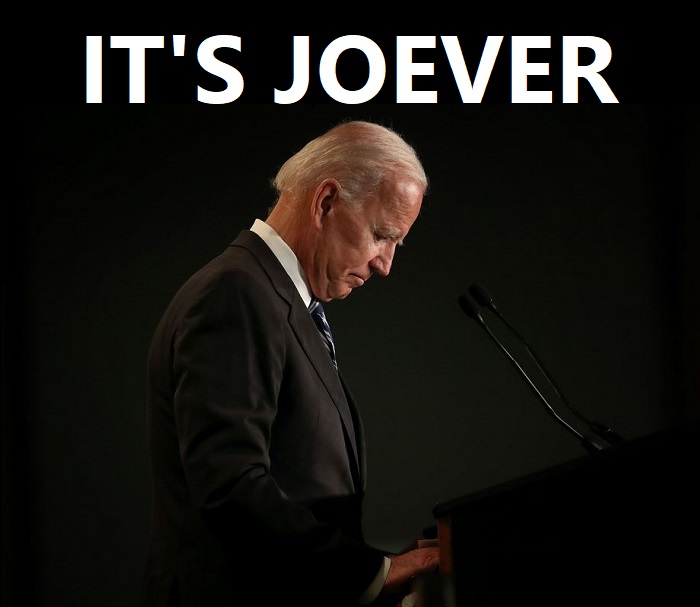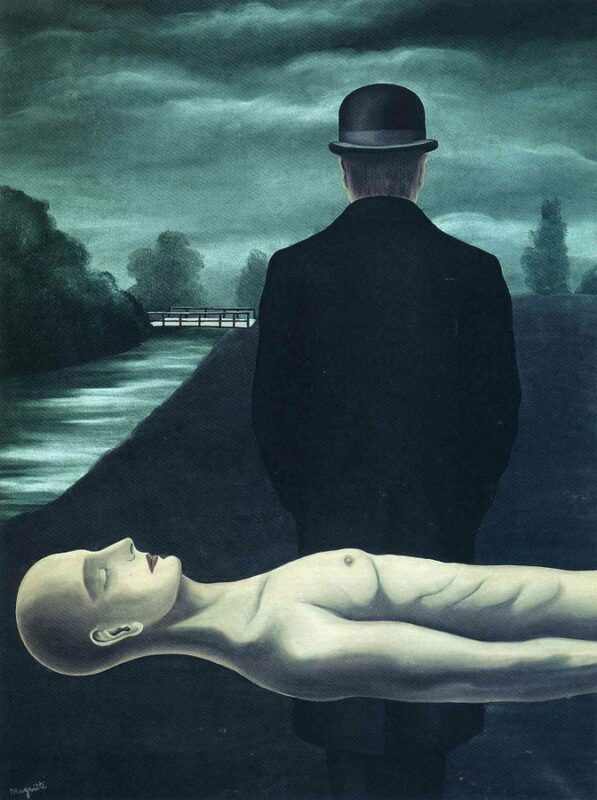You should be my friend because I’m wonderful. Just incredibly good. Here is a list of my charming qualities:
1) I’m an introvert. But, like, I’m also an extrovert. Does that make sense? Sometimes I want to be alone, but sometimes I want to socialize, so it’s like I’m an introvert-extrovert. An inxtrovert.
2) I was a gifted child. I could perform jaw-dropping feats of mental ability, like recite the names of all 150 starting Pokemon, or flawlessly quote the theme song lyrics of popular cartoon shows after hearing them a mere six hundred times. Now that I’m an adult, I have zero accomplishments, but that’s what happens when you’re a gifted child: you crack under the weight of societal expectations. My total lack of achievement means I’m actually smarter and better than you.
3) I am a sapiosexual. This means I am attracted to intelligent people. Like Caroline Ellison? God no. Like Natalie Portman. That kind of intelligent person.
3) I’m a “foodie”. I watch Youtube channels and cooking shows for several hours a day. I don’t actually know how to cook, and eat the most disgusting slop that ever clogged an artery: it pours over my obese, wobbling chin and dries in caked rivulets that I later chisel away (it comes away in chunks, with pieces of my skin attached like bloody nametags). I’m spiritually a foodie, however.
2) I believe the world is spiraling out of control. Not me, though. I’m a mighty bulwark of unswerving (if sarcastic and quippy) rationality. The other day I shared a news story (from a site called “The Lemon” or something) about how a hated politician has promised to personally take a shit in the average voter’s mouth if he wins. I got comments saying the news story was “not real” and “satire”, but even if that’s true, doesn’t just that prove my point that the world’s gone mad? Nobody can tell the difference between news and satire anymore,
1) I have many disorders. My room is untidy because I have ADHD and I like organizing things because I have OCD and sometimes I get a bit sweary because I have Tourettes. Sometimes I get bored and soften the keratin in my fingernails under hot water and gently pull them back from my fingers to expose a blood-filled slit glittering with hundreds of eyes because I have ʥ̷͈̦̇ʝ̸̱̏̈͂ɸ̸̭̳̅̕Ѽ̶̤͎̒̓́Ω̵̢̭͋█̶̧̀̋̏Ⱨ̷̜̯͒̕☼̴̪͊╒̵͉̈́̑͆Ꝟ̴̖̔̍̈́.
0) I like being ignorant of things, but only if they’re low-status things associated with dumb people, because then I look smart. I call football “sportsball” to demonstrate that it’s utterly beneath me. My brain has no room for “sportsball”, presumably because it’s full of higher philosophical concerns, instead of a keening, idiotic vacuum.
-1) I love rejecting the essence of things while getting high huffing their vapor. I do not believe in God or go to church, but spirituality is very important. Astrology is silly, but as a Virgo of course I’d think that. Myers-Briggs is drooling pseudoscience, but that’s my INTP side coming out. Marvel movies are prolefeed for idiots, but didn’t Tessa Thompson absolutely serve cunt in the latest Thor movie? I want to be a cool countercultural rebel who’s above the lame mainstream, while still enjoying all the products they do.
-2) Speaking of Hollywood movies, did you know that sometimes they have factual errors? It’s true! Buckle in if we ever watch one together, because I’m gonna explain all the stuff they’re getting wrong. Explosions don’t make sound in space. Guns don’t have that many bullets. Snapping your fingers doesn’t cause half the universe to die, no matter how many jewels you have. I’m really smart. Way smarter than the people who make movies.
-5) As a student of history, I am aware of key historical figures and concepts such as the Generic Bad Man (Hitler), the Generic Good Man (Jesus/Martin Luther King/Mister Rogers), the Evil Ideology (fascism/communism), and the Bad Event (The Holocaust/9-11). My understanding of politics flows downstream from this: the trick is to figure out how to match current events to the above archetypes.
-17) You have to support my favorite candidate, or we can’t be friends. Sure, they might not be Generic Good Man, but there are chilling parallels between the candidate I hate and Generic Bad Man. We need to support the lesser of two evils, before his nefandously toxic Evil Ideology takes over society and plunges us off the precipice into another Bad Event.
-666) I believe all the problems in the world could be solved if we just stopped being assholes. It’s that simple. Palestine? Just be decent humans to each other, for fuck’s sake. Ukraine? DBAA. It’s not that hard. Generic Good Man showed us the way. Remember the human. Be excellent to each other.
-1000000000) I am a survivor of child sexual abuse. When I was a baby, numerous older relatives kissed me on the head, which I was in no condition to consent to (and frankly, you shouldn’t kiss a person 30 years younger than you under any circumstances). This is further proves that I’m a worthy person. Studies have shown that pedophiles target gifted, intelligent children, because they are Manichean forces of evil that seek to snuff out all that’s good and pure in the world. So the more sexually abused you are, the better a person you are.
-i−3 = i) I’m socially awkward. Here’s one of my endless cavalcade of social faux pas. Get your cringe hat on, because this one’s a fucking doozy.
I was standing outside a house. It had ugly vinyl siding, finger-caressed with green mold. The driveway was splattered with dirt from passing traffic. It was a strange house, seemingly built to be ignored. A house that a hundred people can drive past each morning, without any of them remembering it.
Why had I come here? A vague memory suggested I was supposed to deliver a letter, but there was no letter in my hand or anywhere on my body. I had either forgotten it, or dropped it along the way.
I did not turn to go. Instead, I stood at the door, and heard a telephone ring inside the house. The ring was sharp and jagged; a buzzing frequency muffled by the wood of the door before knifing into my ear like titanium-tipped Morse. I was spellbound. Captivated. I felt the rings echoing in my head, shimmering back and forth. They were like ripples on a pond.
Nobody picked up ringing phone. I felt strongly—and strangely—that the call was meant for me.
But I hesitated at the front door. This was right but also wrong. It wasn’t my house. You’re not supposed to trespass. Not that it stops Them. When I wake up, I often see Them around my house, peering under furniture and appliances, and drilling holes in my walls (holes that are always mysteriously repaired the next day). They don’t respond when I talk, or answer any of my questions, but if They can abrogate the rules, why can’t I?
I pushed opened the door. It creaked, opening like a mouth to reveal a stark gash of darkness and an exhale of dank air. I felt guilty, as if I’d just inflicted a found on the house. I stepped through, into darkness, stepping across dusty tiles toward the ringing phone.
But there wasn’t just one ringing phone. There were many. The house was bigger than it looked from the outside, presenting numerous rooms and walls to the eye, and each surface had a phone on it.
I glanced around, terrified by the dozens of ringing phones. They were like chanting demons. Some phones were tacky plastic, others had rotary dials crumbly with verdigris. Still others were sleek and modern and corporate. Coffee’s for closers phones. But they are all united in speaking to me, shrieking at me. The ringing pierced me, seemed ready to tear me asunder like iron hooks in a fish’s gullet. I could not stay in one place, or in one piece. I’d never heard such a deep, eviscerative, knowing sound.
Dazed, I picked up one of the phones.
I heard and listened to a sound that chilled me and make no sense. It just seemed wrong in my auditory canal. But the longer I heard it, the more certain I became that it was the sound of chewing. Of mouth movements. Of gurgles and swallows and crunches and squirts of acid and enzymes. It decanted in a series of peristaltic shudders and squirts. This loathsome process exists inside our bodies, inside us. It’s horrible.
Like the phones, one mouth became many mouths, multiplying until I was listening to a ghastly, quivering sea of saliva pounding against an unending white shore of teeth. A threnody of horrible mouth noises spilled out of the phone. It felt like being inside the palate of a huge creature, a consumption-beast that only lives to feed itself. One that eats a meal only so it can have the energy to eat another meal, forever and ever and ever.
As I listened to the infinite chewing, moisture dried up in my mouth. I became aware of things like the sky and the soil and the worms crawling through the air and the birds silently winging through the dirt. I felt inverted, inside-out somehow. Have you imagined what it would feel like to have your skin on the inside, and your organs on the outside, all glistening and dripping like fruit rotting on a vine? Having birds land on your kidneys and lungs and peck at them? That’s how I felt. My feet were unsteady: like rotted tree roots, steadily buckling and collapsing before something ineffable. I felt like a hollow caisson-shaft reaching into some inner abyss that is always with me, always moaning with hunger, and I have finally found something to fill it. Or perhaps it has found me.
And then I realized something. I am special.
Special the same way (and for the same reason) a mask is special—obsessively filigreed and hand-tooled to disguise the fact that there’s nothing underneath. That I’m a pretend-person: a one man-theater with no stage or footlights. A gilded sarcophagal plate over an Egyptian pharoah’s face, ageless gold disguising rotted bones and bandages.
I am Xipe Totec, the Flayed Lord. I live in an age of wonders and miracles. I am not one of them.
No Comments »
How has this movie aged? Well, I crunched the numbers. 300 saw wide release on March 9th 2007, which means it has aged by 16 years, 8 months and 11 days.
In this comic book (technically a movie, but on a spiritual level it’s still a comic book), Spartans fight Asiatic hordes…err, Persians in a storm of limbic system carnage. The film is visceral in every sense of the world. Every sword-stroke is photogenically perfect. Blood sprays out with the artistry of Photoshop brush patterns. The dialog sounds like it was workshopped at a WWE writers’ meeting. 300 struggles so mightily to rouse the blood that you wish it succeeded.
300 is a macho fairytale. Nothing anyone says or does is a thing anyone would say or do under any set of circumstances, ever. There’s a weird logic to this: most historical accounts of the Battle of Thermopylae take an equally exaggerated tone. According to Herodotus, Xerxes brought 1,800,000 Persians to the battle (an army far beyond the supply trains of the ancient world), and they drank entire rivers dry as they marched. These are comic book details, and the movie plays the “history as a comic book” angle to the hilt. It’s all a story told by the fictional soldier Dilios on the eve of the battle of Platea: he’s transparently an unreliable narrator, a propagandist trying to raise the morale of the Greeks, and he knows not to let the truth get in the way of a good story.
“It’s fake, bro” is the movie’s get-out-of-jail card, played again and again. You cannot complain that any of the story’s details are unrealistic/illogical/offensive, because this is how Dilios is telling the story. It absolves Frank Miller and Zack Snyder of their excesses by putting those excesses in the mouth of a fictional narrator.
And they are excessive. The Persians have elephants bigger than the Oliphaunts in Return of the King. Xerxes stands exactly seventeen and a half feet tall (cut him in half and you could make two division-1 basketball players) and looks like a yassified Cenobite. At the start, Leonidas is shipped to the Spartan warrior school, or agōgē (“ah-go-gay”—the movie wimps out of pronouncing it that way, of course), where he learns to fight wolves while wearing a loincloth in the snow. The wolf looks like Gmork from The Neverending Story, and has “Claws of black steel…fur as dark night” (as opposed to those really bright nights where you go to bed wearing shades). This harsh training pays off, and the Spartan boys are forged into disciplined and resourceful warriors, capable of fighting tirelessly for weeks while eating (as far as I can recall) one apple between the lot of them. They also don’t seem to have any kit or gear, so I wonder what orifice they used to store the helmets they wear later on. I think I’ll skip the deleted scenes on the DVD.
I’m not sure if I like or even respect what 300 is doing.
First, this metafictional approach is kind of a cheat: the movie wants to eat its cake and also have it. It asks us to commit to a spectacle of blood and guts…only to pull back and say “lol, just a prank bro.” 300 is oddly guilty about what it is. The absurd Golden Age cheeseburger epics (which 300 aspires to be) were earnest and believed in the mission, but 300 is written with a certain defensiveness, as if trying to defend itself against criticisms. It’s like a sales pitch that starts off “Now, I know you’re thinking this is a scam…” Maybe I wasn’t, but I am now.
Also, if the events depicted on the screen are mostly lies, what do I get out of watching it? It hollows the whole experience for me. It’s not as if the film has anything interesting to say about the nature of history and propaganda. It wants us to take the blood-and-steroid crazed action seriously…only to yank the rug out from under as at the end. (Also, the movie undercuts its own framing device by depicting the “real” Battle of Platea in exactly the same gung-ho style as “fake” Thermopylae.)
We don’t even need Dilios as a framing device. The face-melting color grading, the omnipresent bloom and lens flares, the way bronze armor screams radioactively with light…this is the world exaggerated, transfixed by a fever-heat of fantasy until colors crack and run. You should not need to be told this is a fairy tale. Fantasy is stamped on every frame like a barcode.
In real life, Sparta was a slave state, where only about 15% of the population (the spartacoi) were considered citizens. But 300 trafficks in Sparta as symbols. It’s fitting for Dilios and Leonidas to prate anachronistic nonsense about Sparta being the world’s last hope for “reason and justice” (the Sparta that really existed made nearly no contributions to philosophy and governance). The movie does not depict Spartans, except in the loose textual sense that Hagar the Horrible depicts Vikings. Leonidas is not Leonidas. He’s He’s Davey Crockett. He’s Chris Kyle. He’s an American…or at least the American that Americans aspire to be. It’s like complaining that Batman doesn’t work the way police officers do in real life: he’s not supposed to.
The movie has all its defenses and escape clauses all lined up, ready to refute naysayers. Every criticism you can make is one Miller/Snyder (and Herodotus?) have anticipated, and already trimmed the claws off of. But that’s part of the problem. Heavy Metal doesn’t do that. I love style. But only when it’s paired with self-belief. Trying to hide behind a weaselly postmodern mask just doesn’t work. Ironically, 300 just lacks courage. An exuberant celebration of blood and thunder shouldn’t need to apologize so damned much.
No Comments »



